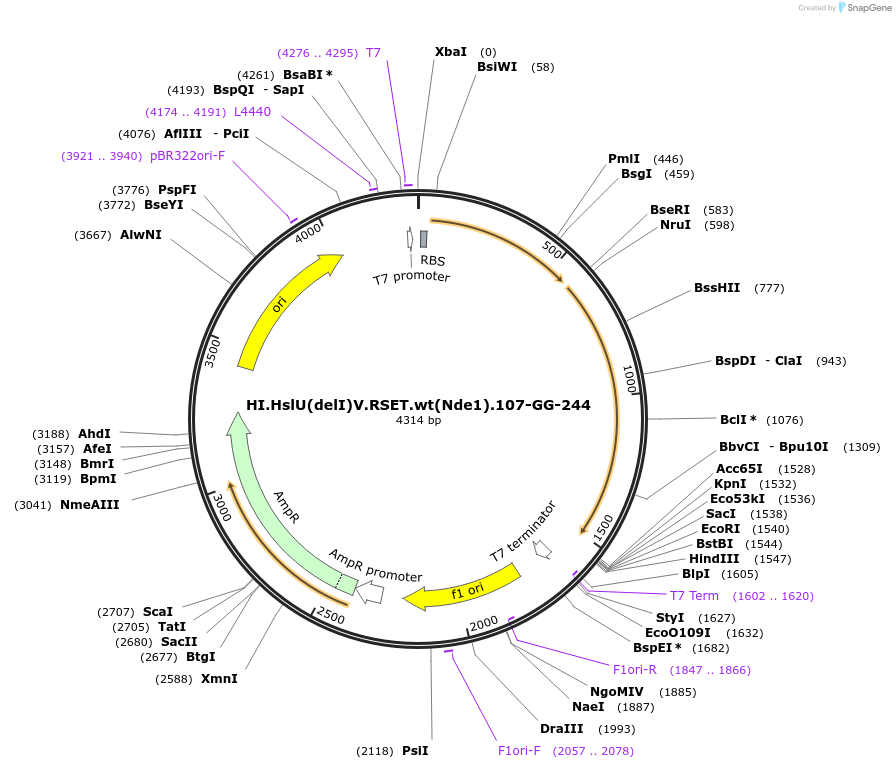HI.HslU(delI)V.RSET.wt(Nde1).107-GG-244
(Plasmid
#17859)
-
Depositing Lab
-
Publication
-
Sequence Information
Ordering
| Item | Catalog # | Description | Quantity | Price (USD) | |
|---|---|---|---|---|---|
| Plasmid | 17859 | Standard format: Plasmid sent in bacteria as agar stab | 1 | $89 | |
Backbone
-
Vector backbonepRSET_B
- Backbone size w/o insert (bp) 2800
-
Vector typeBacterial Expression
Growth in Bacteria
-
Bacterial Resistance(s)Ampicillin, 100 μg/mL
-
Growth Temperature37°C
-
Growth Strain(s)DH5alpha
-
Growth instructionsBL21(DE3)
-
Copy numberHigh Copy
Gene/Insert
-
Gene/Insert nameHaemophilus influenzae heat shock loci U and V
-
Alt nameH. influenzae HslUV
-
SpeciesHaemophilus influenzae
-
Insert Size (bp)1470
-
Mutationcoding sequence for residues 108-243 of HslU (the "I domains") replaced with coding sequence for two glycines
Cloning Information
- Cloning method Restriction Enzyme
- 5′ cloning site NdeI (unknown if destroyed)
- 3′ cloning site KpnI (unknown if destroyed)
- 5′ sequencing primer T7
- (Common Sequencing Primers)
Resource Information
-
A portion of this plasmid was derived from a plasmid made byInsert for full-length HslUV cloned from two plasmids of the H. influenzae genomic sequencing project obtained from ATCC
Terms and Licenses
-
Academic/Nonprofit Terms
-
Industry Terms
- Not Available to Industry
Trademarks:
- Zeocin® is an InvivoGen trademark.
Depositor Comments
Also used to express and purify HslV protein alone, which is expressed in excess over HslU.
These plasmids were created by your colleagues. Please acknowledge the Principal Investigator, cite the article in which the plasmids were described, and include Addgene in the Materials and Methods of your future publications.
-
For your Materials & Methods section:
HI.HslU(delI)V.RSET.wt(Nde1).107-GG-244 was a gift from David McKay (Addgene plasmid # 17859 ; http://n2t.net/addgene:17859 ; RRID:Addgene_17859) -
For your References section:
Structure and reactivity of an asymmetric complex between HslV and I-domain deleted HslU, a prokaryotic homolog of the eukaryotic proteasome. Kwon AR, Kessler BM, Overkleeft HS, McKay DB. J Mol Biol. 2003 Jul 4. 330(2):185-95. 10.1016/S0022-2836(03)00580-1 PubMed 12823960



